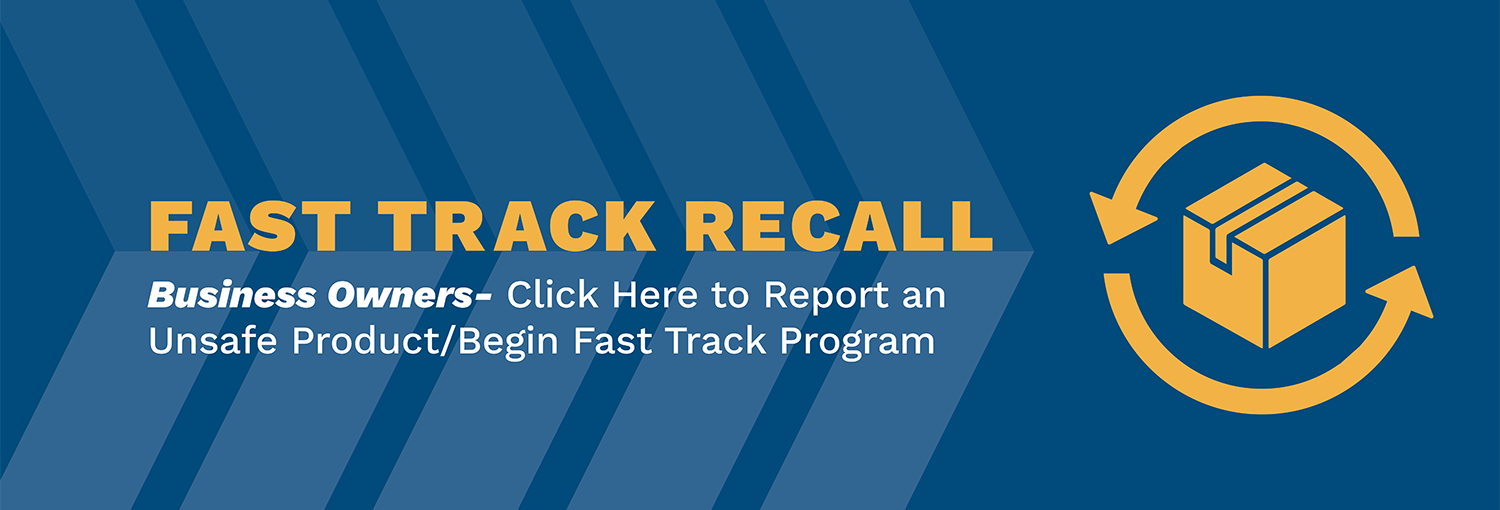If you are a manufacturer, importer, distributor, or retailer of consumer products, you may need to conduct a product recall in the future.
Experts have shown that one of the best ways to ensure that a product recall is effective is to have a recall plan already in place and to execute the plan as quickly as possible. A well-thought out, well-executed recall plan can save lives and prevent injuries in addition to limiting damage to your company’s brand and bottom line.
Many recalls at the CPSC begin when a company follows the law and reports their product to the CPSC. Other recalls happen after reports are received from consumers and other sources. Whatever the source of the recall, once the CPSC decides that a recall is necessary, CPSC staff will expect your company to respond quickly to its requests for information and to work closely with a member of the CPSC’s Office of Compliance.
The CPSC has compiled resources to assist companies that manufacture, import, distribute, retail, or otherwise sell consumer products. These resources highlight the issues important to the CPSC for a firm to incorporate into its recall plan. Companies should also carefully review the Product Safety Planning, Reporting, and Recall Handbook in order to:
- become familiar with their reporting requirements under sections 15(b) and 37 of the Consumer Product Safety Act, and Section 102 of the Child Safety Protection Act, Pub. L. 103-267;
- help companies learn how to recognize potentially hazardous consumer products as soon as possible; and
- assist firms that discover they have manufactured, imported, distributed, or retailed such products to develop and implement “corrective action plans” that address the hazards.
There are also many private firms that can assist you with creating a recall plan and/or executing a recall. For your convenience, a list of some of these firms is provided on our Recall Guidance
Frequently Asked Questions
1. Does the CPSC have a model recall plan?
No. Each product and each industry sector are unique. We have provided resources to highlight the issues important to the CPSC for a firm to incorporate into its recall plan.
2. Does the CPSC have expedited recall procedures in place if my company would like to cooperate in conducting a voluntary recall?
Yes. The Commission has a program called the Fast-Track Product Recall Program in which a firm reports a product defect, as required under section 15 of the Consumer Product Safety Act, and has the option of immediately (within 20 working days) implementing a recall, working with Compliance staff. This program avoids an extensive review and technical assessment of the potential defect and risk. Staff and the recalling firm work on notification measures and the remedy to ensure that the recall program is successful and the defect is corrected. Ordinarily in the Fast-Track Program, no staff findings are made about whether the product being recalled has a product defect or is a substantial product hazard. The Fast-Track Program is another reason why it is advisable to have a recall plan prepared in advance and ready to execute should a recall become necessary.
3. What is a Corrective Action Plan?
The term "corrective action plan" (CAP) generally includes any type of remedial action taken by a firm. A CAP, for example, could provide for the return of a product to the manufacturer or retailer for a cash refund or a replacement product; for the repair of a product; and/or for public notice of the hazard. A CAP may include multiple measures that are necessary to protect consumers. Commission staff refers to corrective actions as "recalls" because the public and media recognize and respond more readily to that description. Please see the Recall Handbook for more information.
Last updated 9/2021 Compliance
This communication has been prepared for general informational purposes only and is based upon the facts and information presented. This communication does not, and is not intended to, constitute legal advice and has not been reviewed or approved by the Commission, and does not necessarily represent their views. Any views expressed in this communication may be changed or superseded by the Commission.

